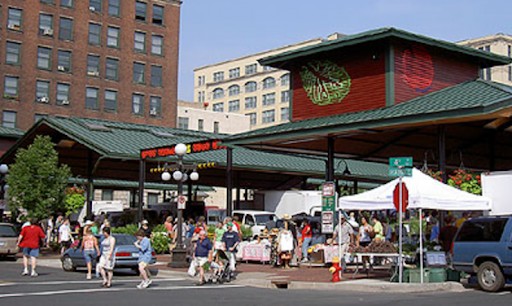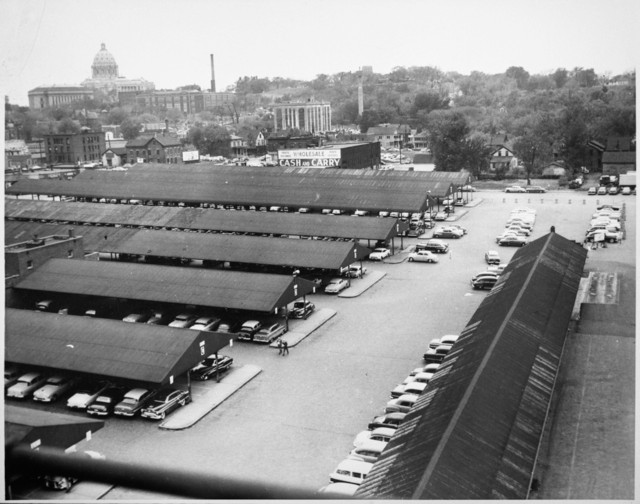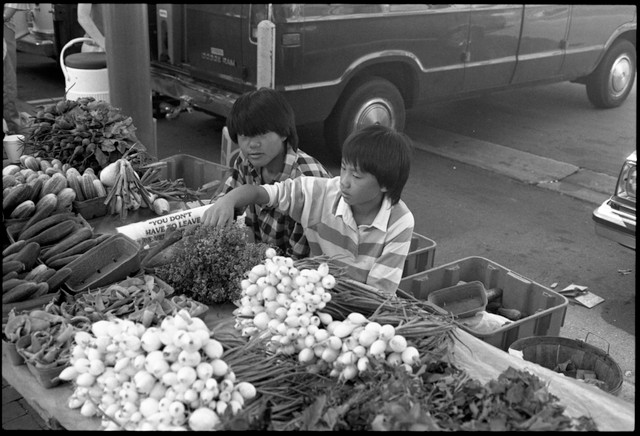Feeding the Urban Village
Introduction
Text-to-speech Audio
Images
St. Paul Farmers' Market today

The St. Paul Farmers' Market on 6th Street (1948)

Vendors at the St. Paul Farmer's Market in Lowertown (1988)

Backstory and Context
Text-to-speech Audio
The St. Paul Growers' Association operates the St. Paul Farmers' Market today.
- They allow only fresh produce from local growers who sell directly to consumers.
- They also bring in local makers of bakery goods, cheese, poultry and meats, maple syrup, eggs, honey, flowers and plants.
- They operate 19 other locations throughout St. Paul and surrounding suburbs. The downtown market operates April-October on Saturdays and Sundays. They also operate a winter market here.
About half of the produce vendors here are Hmong or Hmong Minnesotans. How did people from the mountains of Laos come to be farmers in Minnesota?
- In the 1970s the CIA recruited Hmong men to assist the US in its Secret War against Vietnamese Communists. The United States' 1975 withdrawal from Southeast Asia left our Hmong allies in grave danger and thousands began fleeing their mountain homelands in Laos for Thai refugee camps.
- Unable to safely return home, Hmong refugees resettled in places like Minnesota beginning in 1976. One way the community forged a path in their new home was by adapting their agricultural traditions to Minnesota's markedly different climate and growing season and bringing that produce to the St. Paul Farmers Market in the 1980s.
- Today, many belong to the Hmong American Farmers Association (HAFA), which manages a 155-acre farm in Dakota County where member families can lease land, learn everything from business planning to sustainable agricultural process, and use HAFA’s to sell produce to farmers markets, schools and CSA’s (community-supported agriculture) shares.
- During an ordinary, non-pandemic year not only do Hmong American farmers comprise over ½ the producers at metropolitan farmers markets, they generate over $250 million in annual sales and are major contributors to the Twin Cities' agricultural economy.
Sources
Hang, Pakou. Hmong American Farmers Association, January 28th 2019. Accessed July 27th 2020. https://www.mnopedia.org/group/hmong-american-farmers-association.
Hmong American Farmers' Association. Accessed July 27th 2020. https://www.hmongfarmers.com/.
Lee, Mai Na M.. Hmong and Hmong Americans in Minnesota, February 6th 2019. Accessed July 27th 2020. https://www.mnopedia.org/hmong-and-hmong-americans-minnesota.
Saint Paul Growers' Association. St. Paul Farmers' Market, Accessed July 23rd 2020. https://www.stpaulfarmersmarket.com
Minnesota Historical Society
Minnesota Historical Society
